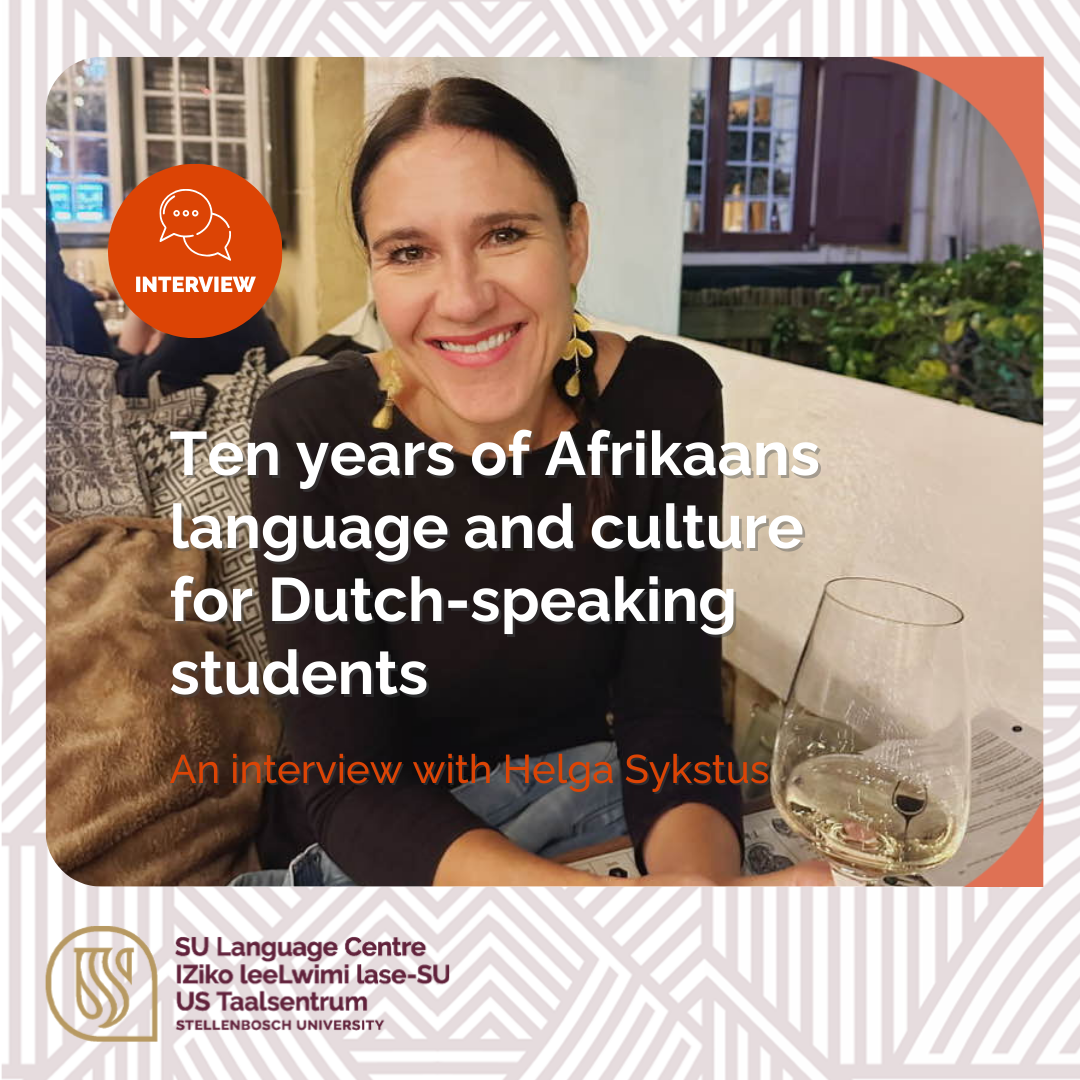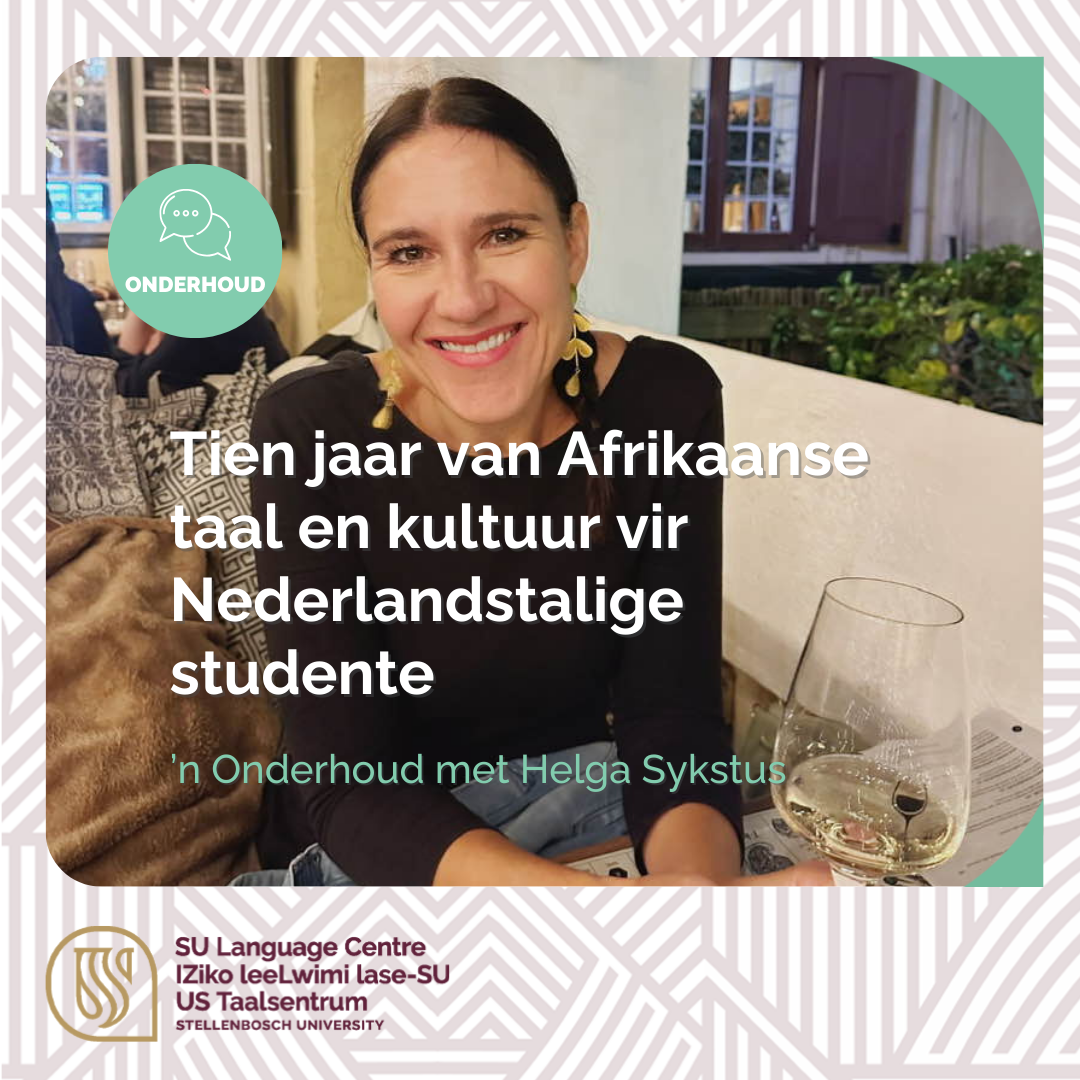Why did you decide to start this very specific course in 2015, now ten years ago? How does this course differ from the Language Centre’s courses for local and international participants from countries other than the Netherlands or Belgium, who do not speak Afrikaans at all?
The courses in Afrikaans offered to foreign students as part of the Global Education Programme (GEP) by SU International, the international office of the University, have been an institution for more than two decades. A course specifically aimed at Dutch speakers had, therefore, existed before 2015, but the course was focused more on literature, and we had to suspend the course for about three years, due to costs and the lack of a presenter. At the start of 2015, a former colleague, Karlien Cillie, and I then decided that we would like to start the course once more, but with a somewhat different approach and flavour. Both of us spent some time in the Netherlands and Belgium as part of our studies, so we didn’t just know the language, but also had the privilege to experience some aspects of the cultures. We felt that simply offering a traditional language course for Dutch speakers would be too limiting and that we could achieve so much more with a course that also has a strong focus on the culture of the people who speak the language. The seed was planted, our proposal was accepted and in Julie 2015, we had our first group of students from the Netherlands and Belgium.
What are the main differences between Dutch and Afrikaans?
The differences we deal with in the course are mainly differences in the meaning of words and concepts, as well as grammatical structures such as pronouns, articles, verbs and tenses. I love showing students that despite Afrikaans seemingly being so similar to Dutch, there are many differences between the languages. They are not only learning a ‘new’ language by acquiring these words and concepts, but are also learning something about the culture. This opens up a new world to them. Students are exposed to loan-words such as “gogga”, “kierie”, “piesang”, “baklei”, “sambreel” and “kombers”, and then we also focus on the many ‘false friends’ between Afrikaans and Nederlands such as “amper”, “boodskappe”, “mug”, “geit”, “kaal”, “motor”, “stoep”, “vies” and “vaak”. And then there are the many words that we use differently or that do not exist in Dutch; for example, “besig”, “oplaai”, “vervelend”, “bobbejaan”, “spookasem” and “hoendervleis”. The list is extremely long!






